When You Are in a Speed Zone Posted as Slow Speed, Minimum Wake: Your Vessel Should Safely Navigate
Navigating through various waterways requires boaters to be aware of different speed zones and restrictions to ensure safe and responsible operation.

One such speed zone is the "slow speed, minimum wake" zone. In these areas, vessels must be operated at a speed that minimizes the wake they create, typically around 5 to 6 knots, depending on the boat.
These zones are implemented for various reasons, including ensuring the safety of other boaters, protecting marine life, and preserving the integrity of waterfront properties.
Understanding and complying with the "slow speed, minimum wake" restrictions is crucial because failure to do so could result in legal consequences such as fines or even suspension of your boating privileges.

It is essential to be familiar with the posted signs and markings indicating such zones, and adjust your vessel's speed accordingly.
By doing so, you are contributing to a safer and more enjoyable experience for all water users.
Key Takeaways
- Boaters should operate at minimum wake speed in designated "slow speed, minimum wake" zones
- Complying with these speed zones is crucial for the safety of other water users and the environment
- Failure to adhere to the posted speed restrictions could result in legal consequences and fines
Understanding Speed Zones
Definitions and Signs
Slow speed, minimum wake zones are designated areas where boats are required to operate at reduced speeds, ensuring that a minimal wake is created. These zones are put in place for various reasons, such as to protect wildlife, prevent shoreline erosion, or to ensure the safety of other waterway users.
Idle Speed, No Wake: In these zones, boats must be operated at a speed no greater than that which is necessary to maintain steerage and headway. This typically means going 1 to 3 miles per hour, without producing a wake.
Slow Speed, Minimum Wake: Inside these zones, boats must be fully off plane and settled in the water, creating very little or no wake. Generally, going 5 to 7 miles per hour would comply with this regulation.
Speed regulations might also come in the form of Maximum 25 MPH, 30 MPH, and 35 MPH speed zones, indicating that the vessels should not exceed the specified limits in those designated areas.
Additionally, a Vessel Exclusion Area limits certain types or all vessels from entering the area.

Navigating Waterways
When navigating waterways, it is important for boaters to be aware of and follow the speed regulations posted.
Signs or buoys are often used to mark these regulated zones, and boaters must stay vigilant when traveling on water to ensure they comply with the regulations.
- Idle Speed, No Wake Zones: Look for signs or buoys saying "Idle Speed, No Wake."
- Slow Speed, Minimum Wake Zones: Watch for signs or buoys with "Slow Speed, Minimum Wake" markings.
In the case of a Vessel Exclusion Area, corresponding signs or buoys will be posted with the specific regulation or prohibition.
Operating Your Vessel
Speed Control
When operating a vessel in a speed zone posted as "slow speed, minimum wake," it is essential to exercise proper speed control.
The vessel should be completely settled in the water and produce only a minimal wake.
To achieve this, a boater may need to slow their boat down and maintain an idle speed. This reduced speed helps in preventing collisions, damage, and environmental issues caused by large wakes.
Throttle control plays a crucial role when controlling a boat's speed.
The motor should be kept at a low setting, as it allows the boat to maintain steerage without exceeding the designated speed limit.
Adjusting the throttle is a skill every boater should master, as it enables smooth transitions between different boat speeds.
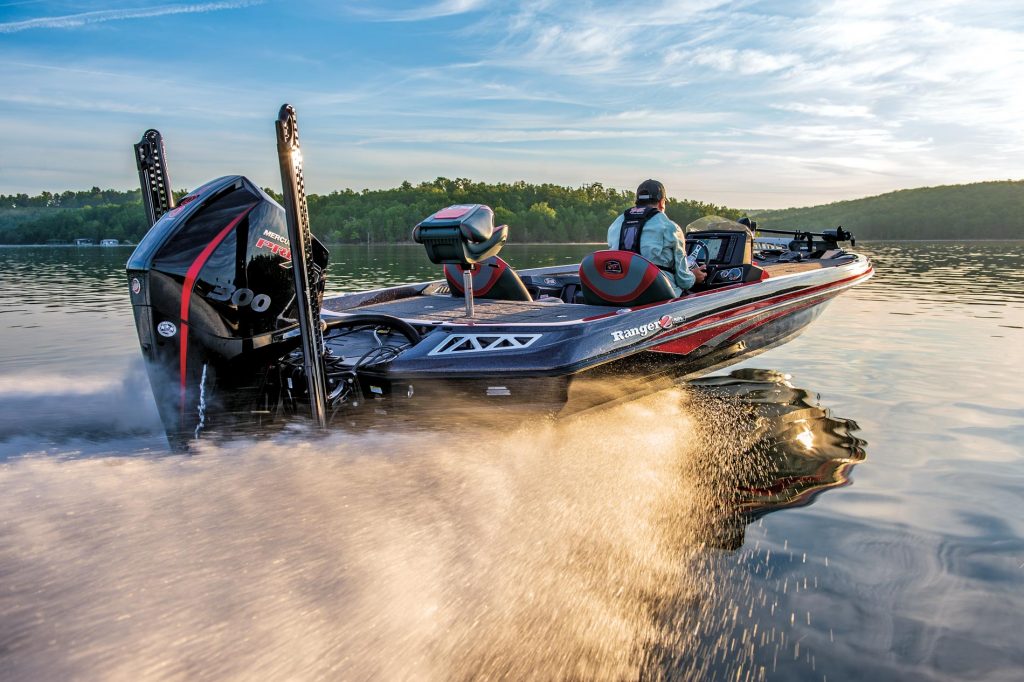
Steering and Maneuvering
Steering a vessel also involves maintaining proper control in various speed zones.
In a "slow speed, minimum wake" zone, operators must ensure the boat remains off plane. This position means the boat is fully settled in the water, and the bow is not elevated.
Being off plane not only complies with the posted speed regulations but also improves overall maneuverability.
In such zones, the primary goal should be maintaining the required speed while ensuring the vessel remains responsive to steering inputs.
A boat may lose steering control if it slows down too much. To prevent a loss of steering, keep your vessel moving just enough to maintain steerage and headway.
Legal Considerations
Regulations and Penalties
In Florida, boating regulations are in place to ensure the safety of both boaters and the sensitive marine environment.
When operating a vessel in a speed zone posted as "slow speed, minimum wake", it is necessary for the vessel to be completely settled in the water, traveling at a speed that minimizes the wake it creates.
Failure to comply with these regulations can lead to penalties, such as noncriminal infractions or fines in some cases.
The state of Florida has stringent regulations regarding collision, wildlife, and manatee protection.
Boating accidents must be reported to the local law enforcement and appropriate authorities. Additionally, reckless operation of a vessel, especially under the influence of alcohol, is punishable under Florida law.
Navigating through these speed zones comes with a set of responsibilities, such as maintaining appropriate distance from give-way vessels and following proper navigation rules.
Markers are placed in the water to indicate the boundaries of the speed zones.
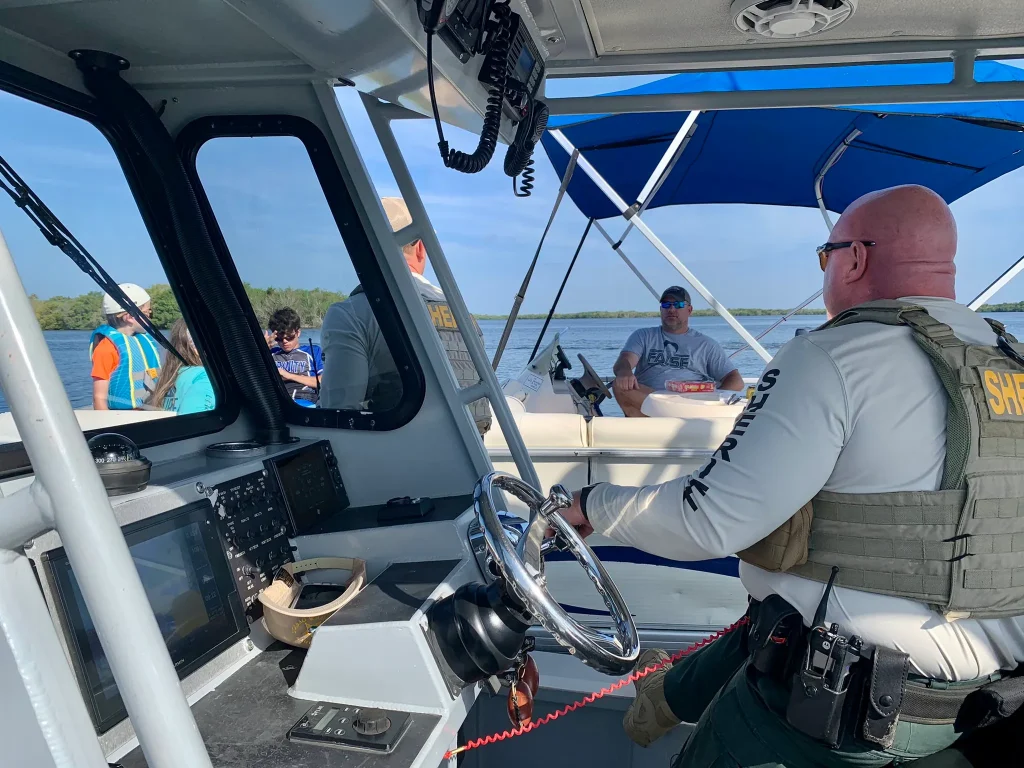
Exemption for Certain Vessels
Under Florida law, some vessels are exempt from following the "slow speed, minimum wake" requirements in certain circumstances.
These vessels include:
- Law enforcement vessels
- United States Coast Guard vessels
- Firefighting vessels
- Construction vessels
- Barges
However, these exemptions are applicable only when they are engaged in their official duties or are operated by a governmental entity.
Moreover, these exempted vessels are still required to adhere to navigation rules and exercise caution while maneuvering through the slow speed areas.
Safety and Prevention
Boating Safety Measures
When in a speed zone designated as "slow speed, minimum wake", it is crucial to operate your vessel at a pace that minimizes its wake, typically around 5 to 6 knots.
Doing so ensures the safety of both your vessel and others around you.
Adhering to boating safety measures such as wearing a life jacket and being aware of courteous boating practices is essential.
- Always have a life jacket available for each person on board.
- Properly display divers down flags when necessary.
- Be aware of surrounding boats and give ample space, especially in congested areas.

Encountering Wildlife
When operating a vessel in areas with significant wildlife presence, maintaining a slow speed and reduced wake is vital in preventing any accidental harm to animals and their habitats.
In case of wildlife detection, avoid making sudden movements or course changes to prevent any unnecessary disturbance.
With time, being more aware of and respectful to wildlife habitats will contribute to their preservation.
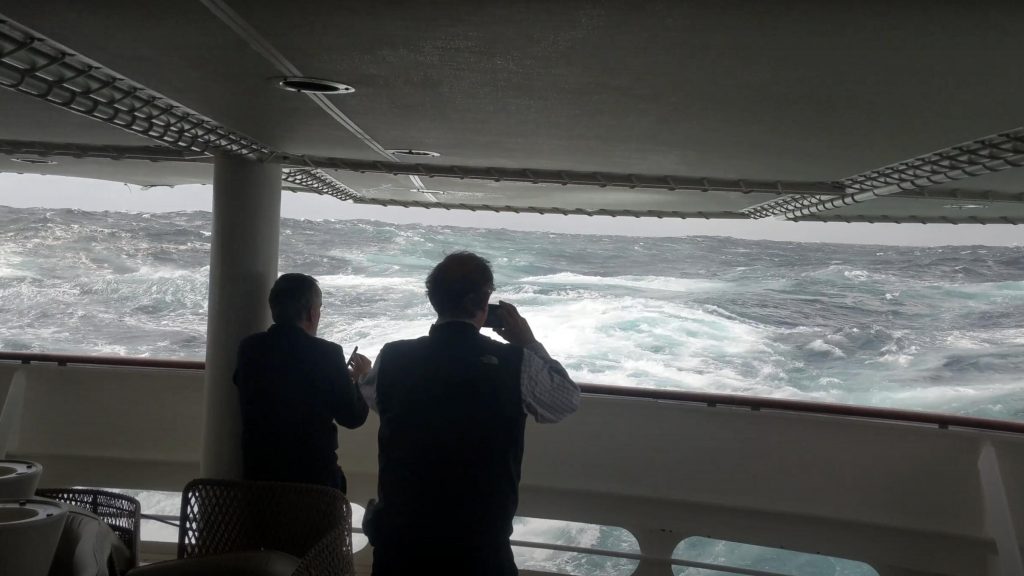
Visibility and Weather Factors
Visibility can be significantly affected by various weather conditions.
Fog, rain, and even strong sunlight can make it difficult for boaters to see other vessels, obstacles or water hazards.
When navigating through areas with reduced visibility:
- Reduce speed to maintain better control.
- Make use of navigation lights when required.
- Keep an eye out for emergency vessels and give them priority.
- Be prepared to handle hazardous conditions related to weather changes.
Alcohol and Boating
Alcohol use is a primary cause of boating fatalities, impairing a boater's judgment, balance, vision, and reaction time. It is crucial to avoid drinking alcohol when operating a vessel, as it increases the risk of accidents.
In most states, the legal limit for blood alcohol content (BAC) while operating a watercraft is 0.08%. Penalties for boating under the influence (BUI) can be severe, including fines, imprisonment, and loss of boating privileges.
Boaters should also be aware of the dangers associated with intoxicated passengers, as their physical reactions and balance can be affected, leading to falls overboard or other injuries. Designating a sober operator or passenger responsible for watching out for potential dangers can help ensure passengers' safety.

Passenger Safety
Life Jackets and Personal Flotation Devices (PFDs): It is essential to have enough life jackets on board for every person.
Ensuring all passengers - especially children and weaker swimmers - wear a properly fitting life jacket can prevent accidental drowning.
Engine Cutoff Switch: The safety lanyard, part of the engine cutoff switch, should always be attached to the boat operator's life jacket or clothing. This will immediately shut down the engine if the operator falls overboard.
Safe Navigation: Whether in wide-open waters or narrow channels, maintain a safe speed and observe speed limits such as "idle speed, no wake" or “slow speed, minimum wake”.
In these zones, the vessel should be completely settled in the water, producing little to no wake.
Crossing Paths: To avoid collisions, when approaching another boat head-on, both vessels should steer to the right to pass each other safely.
It's essential to give way to other boats appropriately, especially when crossing paths or merging into busy waterways.
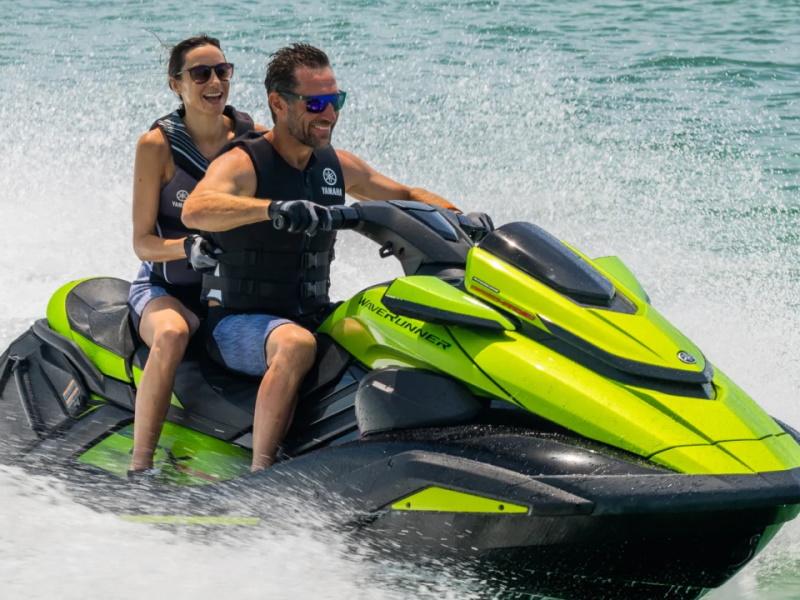
Personal Watercraft Operation
Operating personal watercraft (PWC) such as jet skis and wave runners requires following the same regulations as larger boats in addition to unique safety guidelines.
- Accelerating When Underway: Always allow the PWC to accelerate when underway and avoid excessive speed, especially in crowded areas.
- Right-of-Way: Be aware of other boats, watercraft, and swimmers in the area, and give them the right-of-way as appropriate.
- Renter Responsibility: PWC renters should ensure receiving proper instruction from the rental company and understand the importance of adhering to responsible boating practices.
- Red Flag Warning: A red flag on the water indicates a diver down; maintain a safe distance of at least 100 feet from the flag and be alert for swimmers and divers.
Following these responsible boating practices helps ensure both operators and passengers have a fun and safe experience on the water.
Environmental Awareness
Minimizing Wake Impact
When boating in a slow speed, minimum wake zone, it is crucial to reduce the impact of your vessel's wake on the surrounding environment.
Wakes produced by boats can disturb wildlife, erode shorelines, and damage property.
To minimize wake impact, your vessel should be operated at a slow speed that minimizes the wake it creates, typically around 5 to 6 knots depending on the boat.
This allows your vessel to be fully off plane and settled in the water, causing minimal disturbance.
Moreover, it is essential to stay attentive and be aware of any signs or markers that indicate a slow speed, minimum wake regulation.
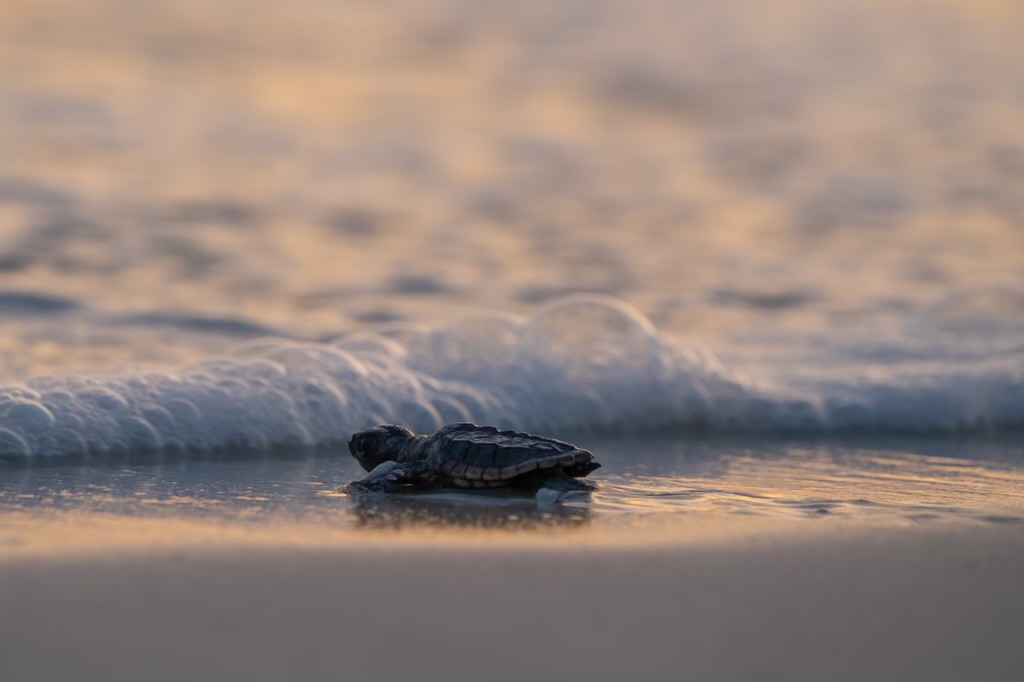
Protecting Marine Habitats
Operating your vessel at a slow speed in designated zones helps protect sensitive marine habitats and wildlife.
For example, manatees are often found in shallow waters where they feed and socialize.
Fast-moving boats create excessive wake, which can disturb the manatees and lead to collisions, causing injury or even death to these gentle creatures.
In addition to manatees, other aquatic wildlife such as fish, birds, and marine plants can be adversely affected by excessive wake.
Reducing boat speed, particularly in shallow waters, can help minimize disturbances and maintain the natural balance of these ecosystems.
To further protect marine habitats while boating:
- Familiarize yourself with local boating regulations and guidelines.
- Remain vigilant and watch for wildlife, such as manatees and birds, to avoid collisions.
- Avoid anchoring in seagrass beds and other sensitive aquatic habitats.
- Use marked channels to navigate and avoid damaging submerged plants and animals.
Consequences of Non-Compliance
When operating a vessel in a speed zone posted as "slow speed, minimum wake," it is crucial to follow the rules and regulations for the safety of everyone involved. Non-compliance with these regulations can lead to a variety of negative consequences, including collisions and accidents, fines, and legal action. In this section, we will explore the implications of not adhering to the rules in a slow speed, minimum wake zone.
Collisions and Accidents
One of the primary reasons for implementing slow speed, minimum wake zones is to reduce the risk of collisions and accidents in areas with heavy boat traffic or sensitive ecosystems, such as bays and marinas.
Operating at a higher speed than allowed can cause unnecessary wake, making it difficult for other boaters to maintain control and increasing the risk of accidents.
Additionally, excessive speed in these areas can lead to insufficient time for reaction, causing collisions with other boats, docks, or structures.
Improper speed control can also result from a lack of skills or experience.
Boaters should be cautious in these zones and pay attention to their surroundings, adjusting their speed according to the factors affecting the situation, such as weather conditions, visibility, and boat traffic density.
Fines and Legal Action
Failing to comply with slow speed, minimum wake regulations can result in fines and legal consequences.
In Florida, for example, boaters who violate the no wake or minimum speed rules are subject to penalties under s. 327.73 of the Florida Statutes.
The amount of the fine can vary depending on the severity of the violation and any previous offenses.
It is essential for boaters to be aware of the regulations in the area they are navigating, as the penalties can be substantial and may lead to legal troubles.
Specific Zone Requirements
Idle Speed and No Wake Zones
In a speed zone marked as "slow speed, minimum wake," a vessel should be completely settled in the water.
This means the boat must be fully off plane and operating without creating a wake. The main purpose of these zones is to reduce potential damage to shoreline properties and ensure the safety of other boats, wildlife, and individuals in the water.
Idle speed or "no wake" zones require a vessel to operate at a speed no greater than that which is necessary to maintain steerage and headway. The vessel should not produce a wake at this speed as well.
These zones are typically established near marinas, boat ramps, or any sensitive areas with a high concentration of boats or people.
It is essential for boaters to understand and obey the speed limits in these zones to ensure safety and prevent any potential damage or harm.
Special Circumstances for Zones
In some instances, special circumstances may require the establishment of temporary speed zones such as during construction operations or events.
During such times, orange flags may be used as markers to communicate this to boaters. These temporary zones might have different speed restrictions, and it is crucial for boaters to be aware of the changes and adjust accordingly.
It is also worth noting that the Florida Statutes define certain criteria to determine if a vessel is operating at a "slow speed, minimum wake."
A vessel is considered to be operating at this speed if it is fully off plane and completely settled into the water while proceeding without wake or with minimum wake.
Educational Resources
Boating Safety Education
A crucial aspect of safe boating is proper education.
There are several courses available for boaters to enhance their knowledge and skills, such as the learning materials available on boat-ed.com.
These courses cover topics such as:
- Steering: Understand how to control your vessel efficiently, even in "slow speed, minimum wake" zones.
- Small and fast boats: Learn to operate different types of vessels properly, including smaller and faster ones.
- Boating fatalities: Become aware of the common causes of fatalities in boating accidents and how to avoid them.
- Engine cutoff switch lanyard: Gain knowledge on the importance of wearing an engine cutoff switch lanyard and how it can save lives.
Completing boating safety education courses reduces the risk of accidents and helps maintain a safe environment on the water.
Licensing and Temporary Certificates
Obtaining a boat license or a temporary certificate is another essential aspect of safe boating. These certifications ensure that boaters have a basic understanding of the necessary safety measures before operating a vessel.
In some cases, boating courses might offer temporary certificates after completion. These allow a participant to operate a boat for a limited time before obtaining their official license.
This temporary certificate can help boaters gain some hands-on experience while being aware of safety guidelines, such as maintaining "slow speed, minimum wake" in designated zones.
Frequently Asked Questions
What regulations must boaters follow in a 'slow speed, minimum wake' zone?
In a 'slow speed, minimum wake' zone, boaters are required to operate their vessels at a speed no greater than necessary to maintain steerage and headway.
The vessel should be fully off plane and completely settled in the water, producing only minimal wake. This is to ensure the safety of other watercraft and waterfront properties in the area.
How does one determine the appropriate speed for a 'minimum wake' area?
The appropriate speed for a 'minimum wake' area is such that the vessel remains settled in the water, and the wake it produces is minimal.
This means the boat does not cause any excessive rocking or danger to other watercraft or property nearby. There is no standard speed limit, as the required speed varies for different types of vessels and water conditions.
What actions are expected from boat operators when navigating 'slow speed, minimum wake' zones?
When entering a 'slow speed, minimum wake' zone, boat operators must ensure their vessel is completely settled in the water and not producing a significant wake.
Operators should also remain vigilant of their surroundings and adjust their speed accordingly to maintain minimum wake. They must also abide by any additional regulations or signage within the area.
What is typically considered to be 'minimum wake' by maritime authorities?
'Minimum wake' is generally considered to be the amount of wake produced by a vessel when it is operating at the slowest possible speed needed to maintain steerage and headway.
This wake should be barely noticeable and not cause significant disturbances to other watercraft, waterfront property, or wildlife.
Under what conditions might the 'slow speed, minimum wake' requirements be temporarily lifted?
In some situations, such as emergencies or when authorized by maritime authorities, the 'slow speed, minimum wake' requirements may be temporarily lifted.
Operators should always follow the guidance and instructions of local law enforcement or maritime officials in such circumstances.
What penalties can be enforced for failing to comply with 'slow speed, minimum wake' regulations?
Penalties for failing to comply with 'slow speed, minimum wake' regulations vary depending on the jurisdiction and the severity of the violation.
Consequences may include fines, suspension or revocation of boating privileges, or even criminal charges if the violation causes significant damage or danger.
Charlie is Editor-in-Chief of Sea Magazine







